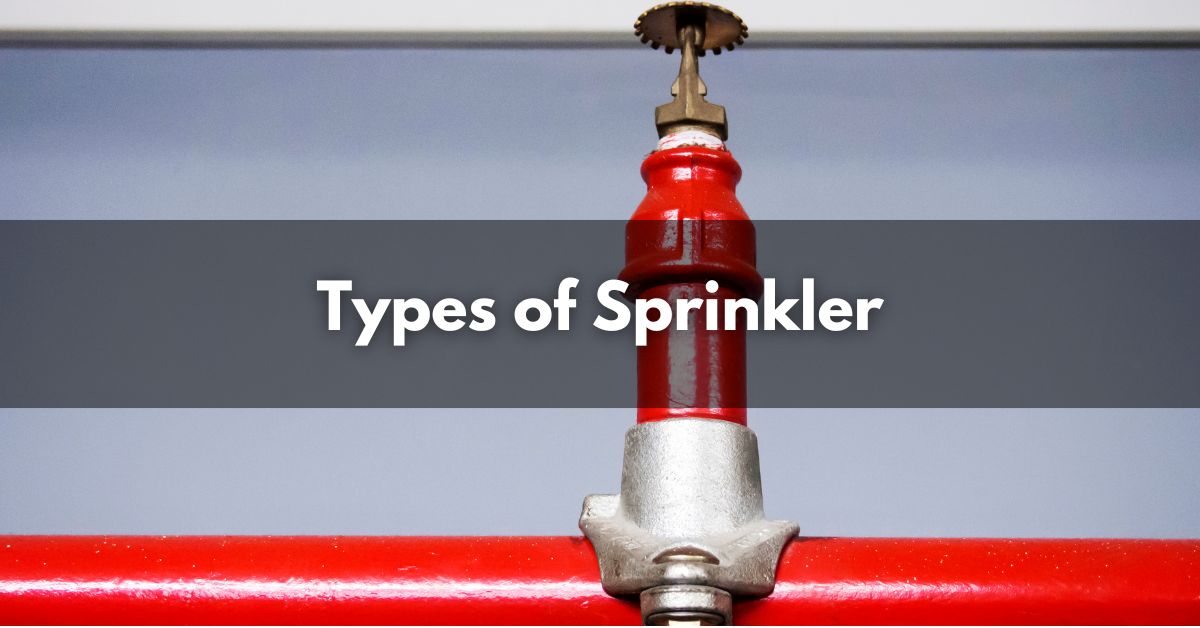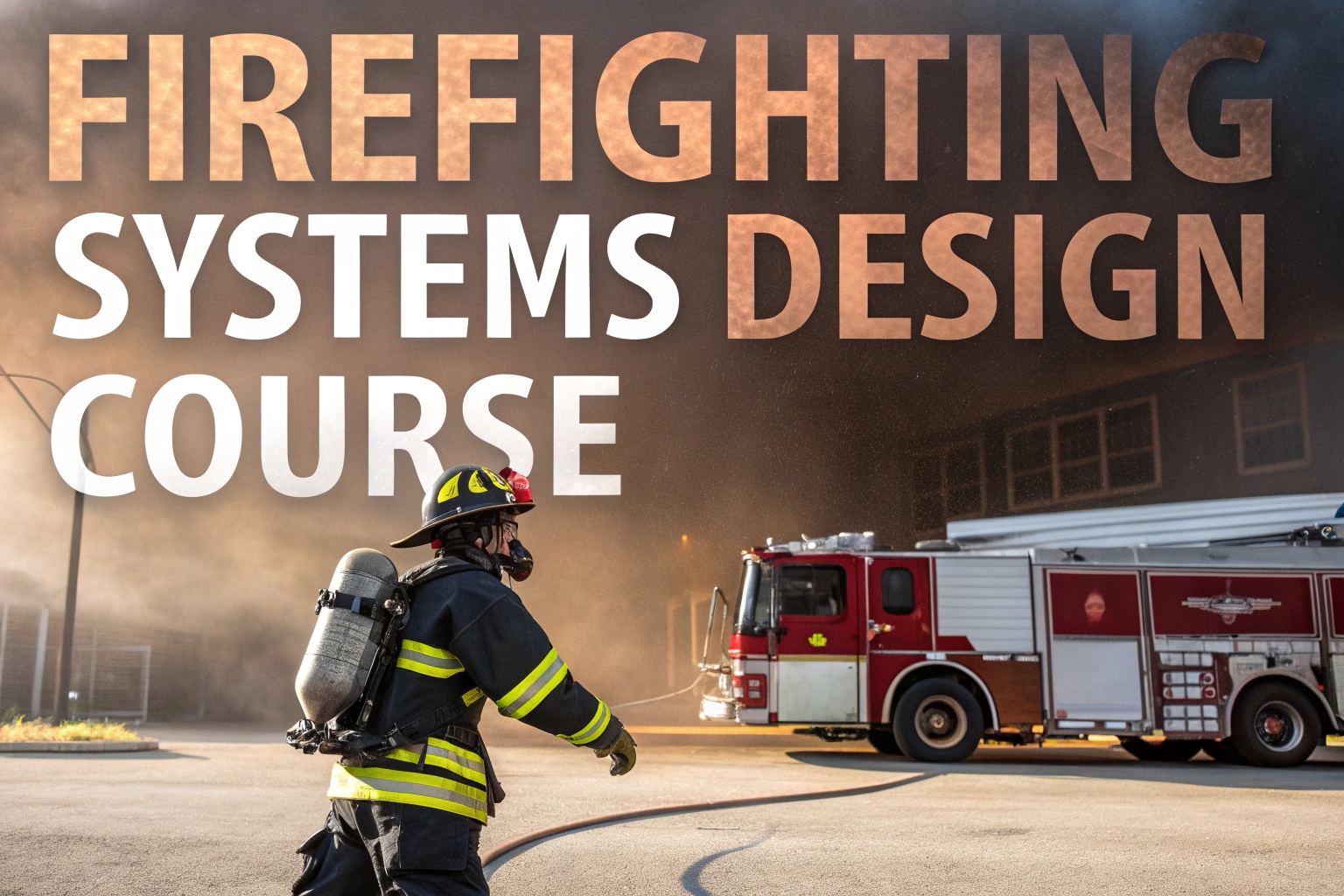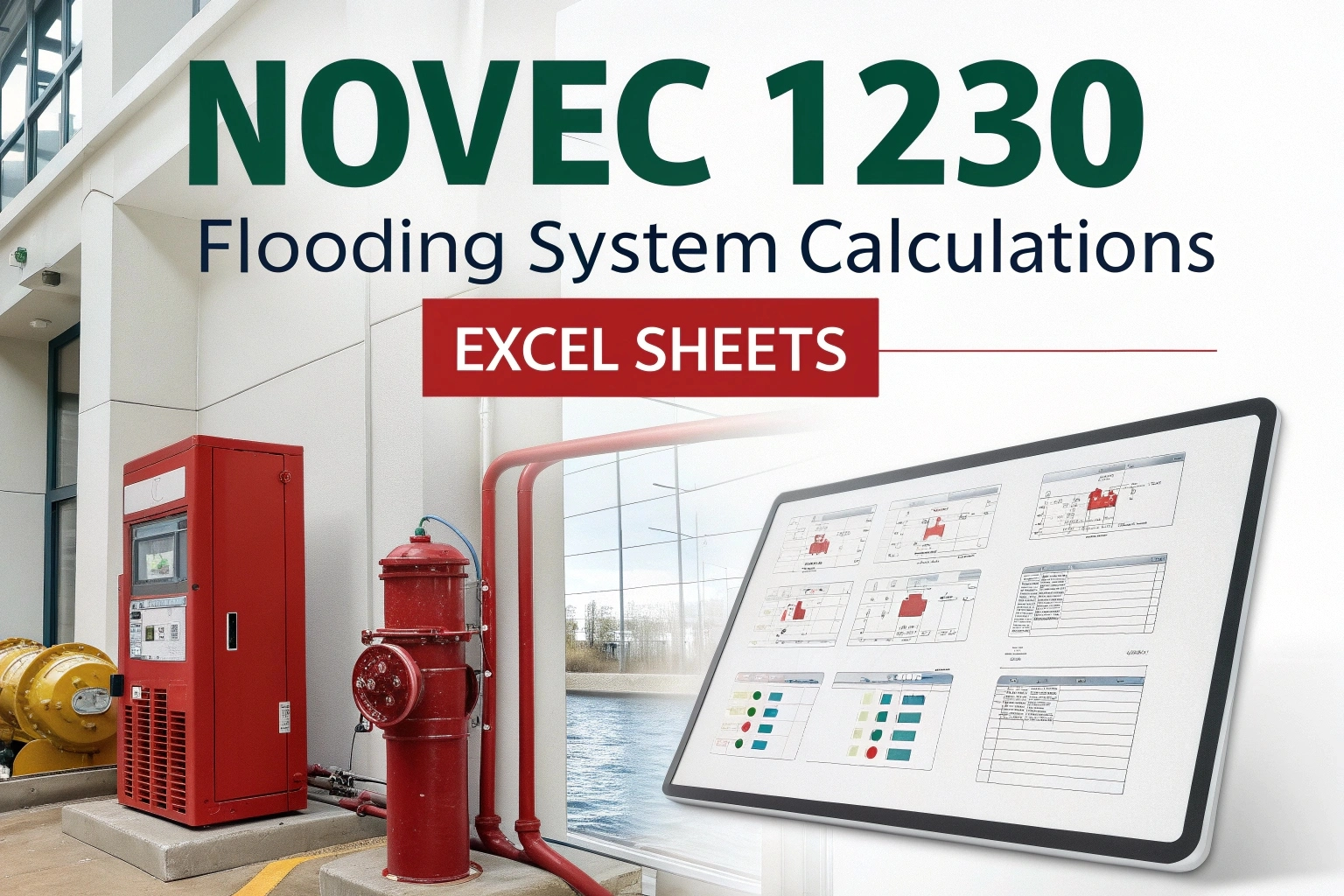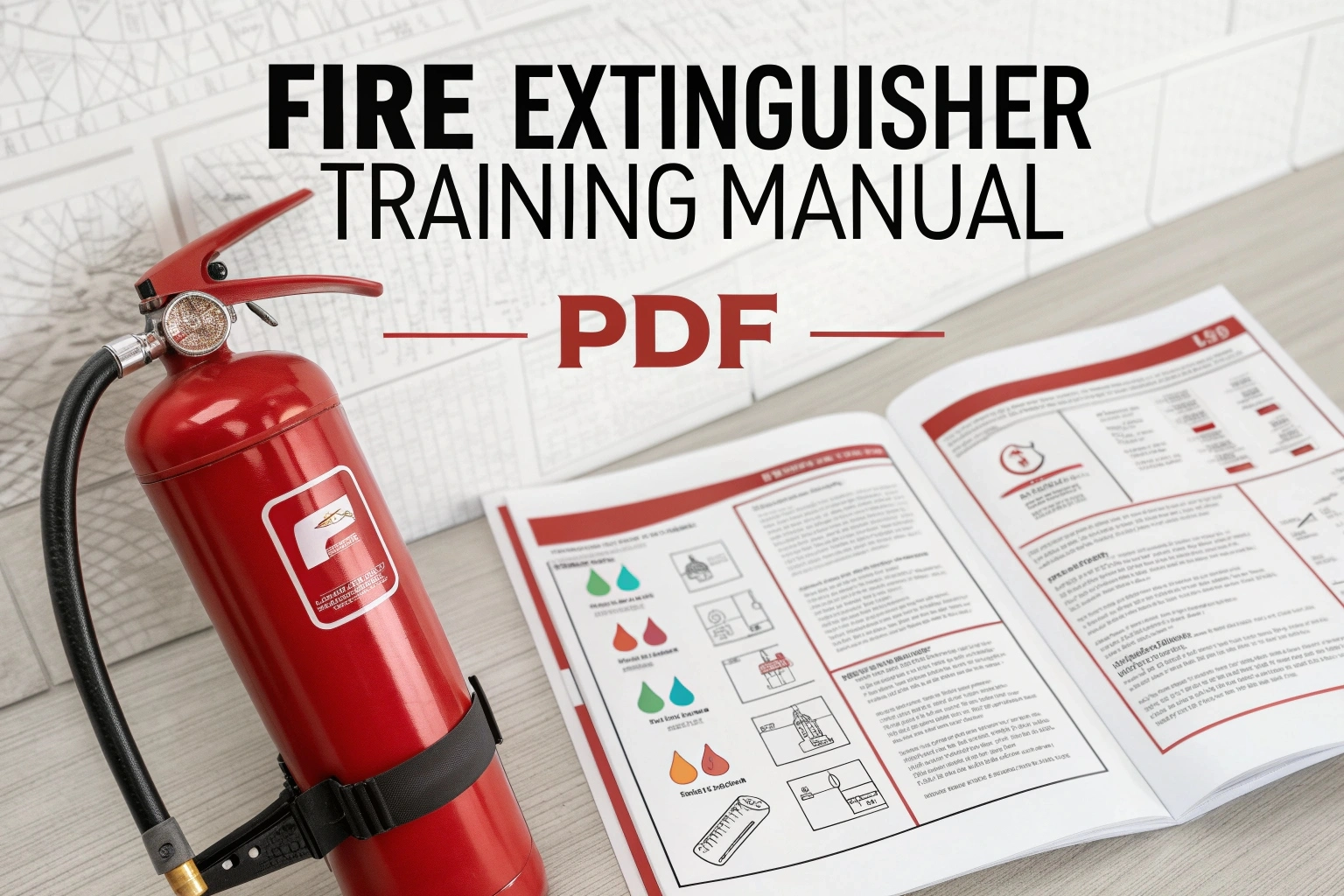Sprinkler systems save lives during a fire. A high quality sprinkler system can help control smoke and flames, reduce the spread of fire, and minimize damage. This will give everyone time to exit the building safely while firefighters arrive. There are four main types of commercial sprinkler systems, each designed to meet the needs of different facilities to ensure quick response and protect people and property.
In this guide, you’ll learn about the four main types of sprinklers, different types of sprinkler heads, how to install a sprinkler system, and the difference between standard and quick response fire sprinklers.
What Are the Main Types of Sprinkler Systems?

1. Wet Pipe Systems
Wet pipe sprinkler systems are the most common type. In this system, the sprinkler pipes are always filled with water. When the temperature at the ceiling gets hot enough, the glass bulb or fusible link in a sprinkler breaks. Since the pipes already contain water, it flows out immediately from that specific sprinkler head. Unlike what you might see in movies, not all sprinkler heads activate at once. Only the sprinkler head where the temperature gets high enough will release water.
Wet pipe systems are reliable and cost-effective, so they are often the first choice when selecting a sprinkler system. However, they might not be suitable in every situation. One important factor is the temperature in the area being protected. If all areas where the sprinkler pipes are located stay at or above 40°F (4°C), then there’s no risk of the water freezing, and a wet pipe system is a good option.
But if any area might drop below 40°F (4°C), further analysis is needed. An engineer might determine that, even if temperatures dip below 40°F, they won’t get low enough to freeze the water. If the temperature can’t be controlled to prevent freezing, then a different type of sprinkler system should be used.
2. Dry Pipe Systems
Dry pipe systems work like wet pipe systems but with one key difference: the pipes aren’t always filled with water. Instead, the water is held behind a dry pipe valve, usually some distance away from the sprinklers. When the temperature at the ceiling gets hot enough, the sprinkler’s glass bulb or fusible link breaks, just like in a wet system.
However, because the pipes aren’t filled with water, air escapes from the open sprinkler head first. This drop in pressure causes the dry pipe valve to open, allowing water to flow into the system and then out of the open sprinkler head. Since there is a delay between when the sprinkler activates and when water flows, dry pipe systems are usually smaller. This size limit helps reduce the delay in water delivery.
Dry pipe systems are a good choice for unheated spaces or areas where you can’t be sure the temperature will stay high enough to prevent water from freezing in the pipes. However, the part of the building where the water comes in and the dry pipe valve is located must stay warm enough to prevent freezing.
3. Preaction Systems
Preaction sprinkler systems are the most complex among sprinkler types. There are three kinds: non-interlock, single interlock, and double interlock. The main difference between preaction systems and wet or dry pipe systems is that specific events must happen before water is released into the system. While this might seem similar to dry pipe systems, the key difference lies in what triggers the water release:
- Non-interlock system: Activated by either detection devices or automatic sprinklers.
- Single interlock system: Activated only by detection devices.
- Double interlock system: Activated by both detection devices and automatic sprinklers.
Let’s explain how these systems work with an example. Imagine a room protected by a preaction system with sprinklers and automatic heat detection. Typically, the heat detection system has a lower temperature rating than the sprinklers, so it activates first. In our example, the heat detectors are set to activate at 135°F, while the sprinklers activate at 165°F.
If a sprinkler head accidentally breaks, causing the glass bulb to shatter, the system would fill with water in a non-interlock system, and water would flow out. In a single interlock system, this wouldn’t happen since the system only fills with water if the detection devices are triggered.
In the case of a fire, both non-interlock and single interlock systems work similarly. The heat detectors, which have a lower temperature rating, should activate first. For both systems, this would cause the system to fill with water. If the fire continues and the temperature rises further, a sprinkler head would open, allowing water to flow, just like in a traditional wet pipe system.
However, you should consider the water delivery delay in a double interlock system. In environments like museums, this delay could let the fire grow, leading to more sprinklers activating and potentially causing more water damage and a larger fire.
4. Deluge System
Deluge systems work like preaction systems but with a key difference: they use open sprinklers or nozzles. Unlike preaction systems, where water flows only from activated sprinkler heads, in a deluge system, water flows from every sprinkler head once the system is filled.
A deluge valve prevents water from entering the system until another detection system, like smoke detectors, activates it. Once activated, water fills the system and flows out through the open sprinklers or nozzles.
When choosing a sprinkler system, consider the level of hazard being protected. For very high-risk areas, like aircraft hangars, a deluge system might be the best choice. Each system type has its own benefits, so it’s important to weigh the pros and cons when selecting the right one for your environment.
In some cases, a building might use a combination of systems. For instance, a common approach in the Northeast is to protect conditioned areas with a wet pipe system and use dry pipe systems in unconditioned areas like attics.
By combining different systems, you can protect the entire building effectively, ensuring that each area has the most suitable type of sprinkler system.
Types of Sprinkler Heads
Fire sprinkler heads have been used for many years and have consistently shown how effective they are at saving lives and protecting property. Statistics show that sprinklers are 95% effective at controlling fires because they target the source of the fire directly. There are four main types of sprinkler heads:

1. Pendent Sprinkler Heads
- Hangs down from the ceiling.
- Sprays water downward in a circular pattern for maximum coverage.
- Ideal for offices, hotels, factories, and similar spaces.
2. Concealed Pendent Heads
- Hidden within the ceiling by a cover plate.
- Works like a pendent sprinkler head after the cover plate falls off when it gets 20˚F lower than the fire sprinkler temperature.
- Ideal for places where appearance matters.
3. Upright Sprinkler Heads
- Stands upright.
- Sprays water upward in a hemispherical pattern.
- Useful in buildings with exposed ceilings, like mechanical rooms, or in hard-to-reach areas like beams and ducts.
4. Side Wall Sprinkler Heads
- Mounted on the side of a wall with half of a deflector.
- Sprays water in a half-circle or crescent shape.
- Great for small rooms, hallways, and places where sprinkler pipes run up walls.
- Sprinkler heads also come with different options, like temperature, finish, and response time.
How to Install a Fire Sprinkler System
Installing a fire sprinkler system is important for protecting buildings and people from fires. This guide will take you through the steps, from planning to final testing.
Design and Planning
- Start by examining the building’s layout and understanding its fire protection needs.
- Identify the building’s hazard level and occupancy type to help design the system.
- Work with fire protection experts to create a sprinkler system layout that meets local codes, NFPA standards, and insurance requirements.
- Think about factors like water supply, sprinkler head placement, and system zoning to ensure the system works effectively.
Get Permits and Approvals
- Before you begin, get the required permits and approvals from local authorities.
- Submit detailed plans for review to make sure everything follows regulations.
- Coordinate with building owners, contractors, and other stakeholders to schedule inspections and organize installation activities according to the approved plans.
Buy Materials and Equipment
- Purchase high-quality fire sprinkler parts, like sprinkler heads, pipes, valves, and alarms, from trusted suppliers.
- Make sure all materials meet industry standards and fit the system design.
Installation Process
- Start by installing the main water supply connection and control valves.
- Lay out the piping network according to the design, ensuring proper spacing and support.
- Install the sprinkler heads in the correct locations, following the design plans.
- Secure pipes and fittings to prevent movement that could affect the system’s integrity.
- Connect alarm devices and other monitoring equipment to ensure the system is supervised and can signal properly.
Pressure Testing and Flushing
- Test the pressure in the piping system to check for leaks or pressure drops.
- Flush the pipes to remove any debris that may have built up during installation.
- Final Inspection and Testing
- Schedule a final inspection with local authorities to ensure the system meets codes and standards.
- Test the system’s functionality, including flow tests and alarm tests, to make sure everything works correctly.
- Fix any issues found during testing and make adjustments to ensure the system performs well.
System Activation and Training
- After the system passes inspection and testing, activate it.
- Walk through the system with building owners or occupants to show them how it works.
- Train building staff on how to operate and maintain the system, including regular inspections and maintenance.
Standard vs. Quick Response Fire Sprinklers
The main difference between standard and quick response sprinklers is the size of the bulb. The bulb in a standard sprinkler is a bit larger, so it takes slightly longer to activate. A quick response sprinkler has a thinner bulb, which allows it to respond faster, as the name suggests.
Want to know more about which fire sprinkler system is best for you? Call 770-333-7979 or visit our website for a free consultation. Fire Systems Inc. offers sprinkler inspections, installations, designs, and repairs.
Conclusion
Choosing the right sprinkler system for the building is crucial for fire protection. Knowledge of the difference between the wet, dry, preaction, and deluge systems will help select what is the most appropriate system for your application. Each of these systems has its pros and cons. Evaluate carefully so that you will fit the conditions of your building. For the best safety, always consult with fire protection experts when deciding on the design, installation, and maintenance of your sprinkler system. This way, you will keep your property and the employees safe in case a fire happens.
FAQs
What are the 4 sprinkler types?
Wet Pipe, Dry Pipe, Pre-Action, and Deluge.
What is sprinkler classification?
Sprinkler systems are classified by light, ordinary, and high hazard levels.
What is a Category 4 sprinkler system?
Used for large residential buildings and blocks of flats over 18m high, needing two tanks and two pumps.
Read More – Refrigeration Cycle: Key Components and Their Uses















